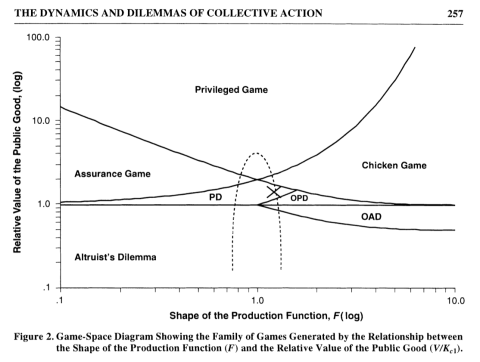Model Model Model Modeling Models
April 1, 2012
In doing some reading about collective action, cooperation, and exchange theory, I encountered (gated link) the figures below:
If you happen to be the kind of person who spends a lot of time around research combining social dilemmas, evolutionary models of cooperation, and econometric production functions, these may seem completely intuitive and you probably do not even need to read the paper to get the gist of Professor Heckathorn’s argument.
Otherwise, the images may feel a bit more like conceptual art. The Plot labeled “C” at the bottom right is my runaway favorite. I am also a big fan of the mysterious “arch” shape and the large “X” that appear in the first figure.
n.b., Professor Heckathorn does an admirable job explaining these images in the paper and my point here, is not to provide a Tuftean critique of some rather ornate visualizations. Instead, I wanted to try to communicate the sensation I felt when I encountered these images in the context of an extraordinarily sophisticated and abstract simulation-based analysis of the social dilemmas used to analyze the theoretical conditions under which people may be more likely to cooperate and contribute to public goods.
That’s right, these figures are part of a model modeling models. Given that I am singling out this particular model for attention, they are also, you might say, part of a model model. Given that Professor Heckathorn’s work in this area is highly sophisticated and compelling, you might even say that these figures are part of a model model model (modeling models).
Filed in cooperation, research
Tags: cooperation, data, data visualization, modeling, research, social science



 subscribe to my feed
subscribe to my feed